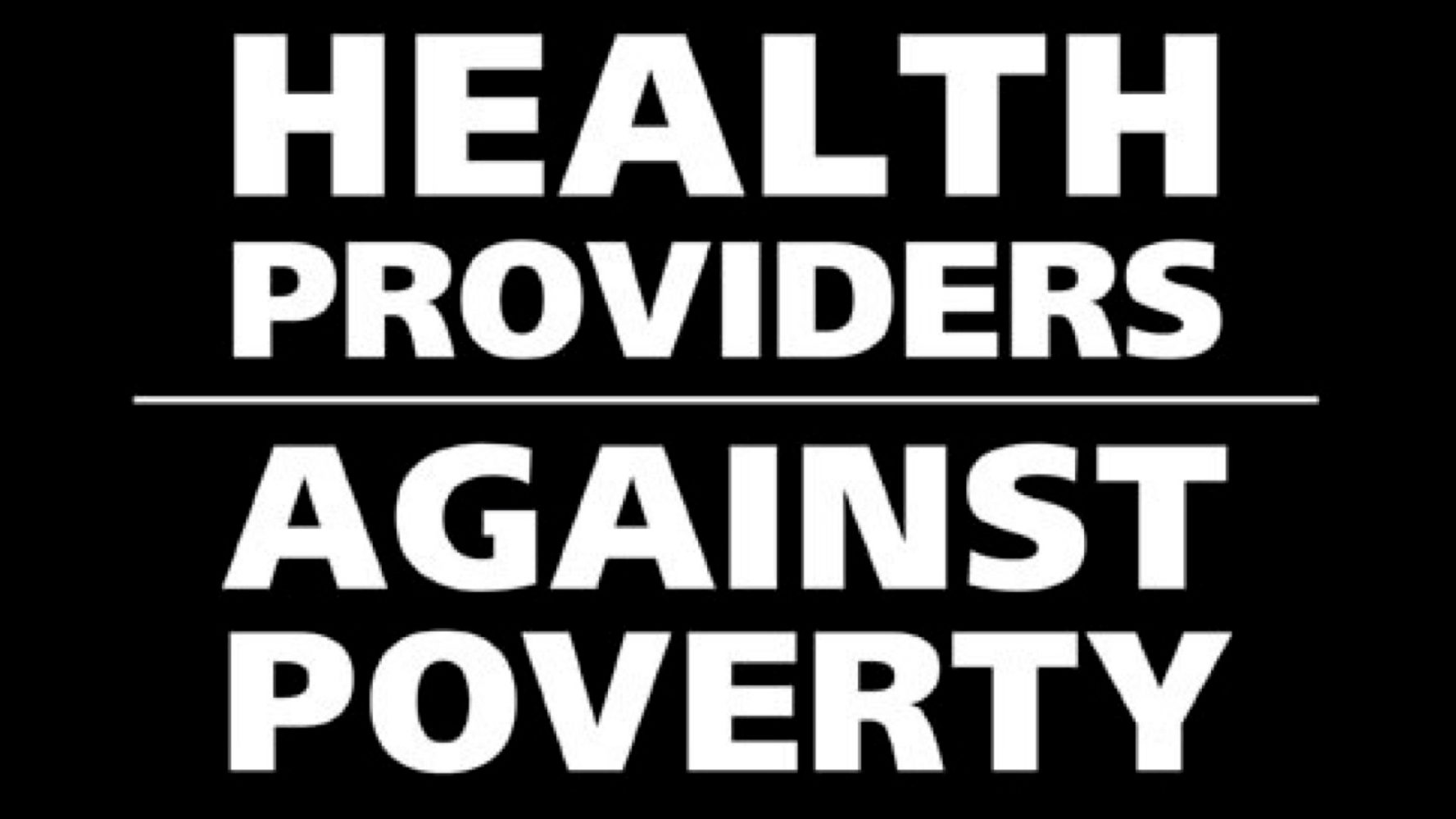Poverty in Canada
- 1 in 7 people (over 4.5 million Canadians) live in poverty1
- 1 in 10 households with children experience food insecurity2
- At least 30,000 individuals are homeless on a given night3
- Compared to a decade ago, a higher number of Canadians are precariously employed4,5
Poverty as a Key Determinant of Health
- 50% of health outcomes can be attributed to the social determinants of health6
- Lower income is associated with increased burden of diseases and higher mortality7
- Premature death is 8 to 10 times higher among people who are homeless8
- In one Canadian city, there is a 21-year gap in life expectancies between the highest and lowest income neighbourhoods (Hamilton, ON)9
If You Want To Help Me, Prescribe Me Money
“Until we see our patients poverty improve, we will not see their health improve”
Income has an impact on health at least as large as smoking or diabetes. Yet most doctors do not see income as an addressable medical issue. Health Providers Against Poverty Founder, Gary Bloch, connects the evidence to action, and proposes a rethinking of the role of doctors in addressing income and other social issues that affect patients’ health.
Statistics Canada Measures of Poverty
Low-Income Cut Off (LICO) – relative measure
The LICO is the income level at which families spend 20% more of their income than the average family on food, shelter, and clothing and is based on family and community size. The 2016 after-tax LICO for a family of 4 in a large urban centre was $39,092.
Low Income Measure (LIM) – relative measure
The LIM identifies families with income below 50% of the median income for a given family size. The 2016 after-tax LIM for a 4 person household was $45,314.
Market Basket Measure (MBM) – absolute measure
The MBM is based on the cost of a specific basket of goods and services representing a modest, basic standard of living for a reference family of 2 adults and 2 children. The 2016 MBM for a family of 4 in Toronto was $41,287.
References
- Statistics Canada. Persons In Low Income Before Tax. Statistics Canada, 2013.
- Roshanafshar S, Hawkins E. Food Insecurity in Canada. Statistics Canada, 2015.
- Gaetz S, Donaldson J, Richter T, Gulliver T. The State of Homelessness In Canada. Toronto (ON): Canadian Homelessness Research Network Press, 2013.
- Lewhuck W et al. It’s More Than Poverty: Employment Precarity and Household Wellbeing. Hamilton (ON): Poverty and Employment Precarity in Southern Ontario Research Group, 2013.
- Galarneau D. Temporary Employment In The Downturn. Ottawa (ON): Statistics Canada, 2010.
- Keon WJ, Pepin L. Population Health Policy: Issues and Options. Ottawa (ON): Senate of Canada, 2008.
- Dorman K, Pellizzari R, Rachlis M, Green S. Why Poverty Is A Medical Problem. Ontario Medical Review, 2013.
- Mikkonen J, Raphael D. Social Determinants of Health: The Canadian Facts. Toronto (ON): York University School of Health Policy and Management, 2010.
- Hamilton Spectator. Worlds Apart. Hamilton (ON): Hamilton Spectator, 2010.
